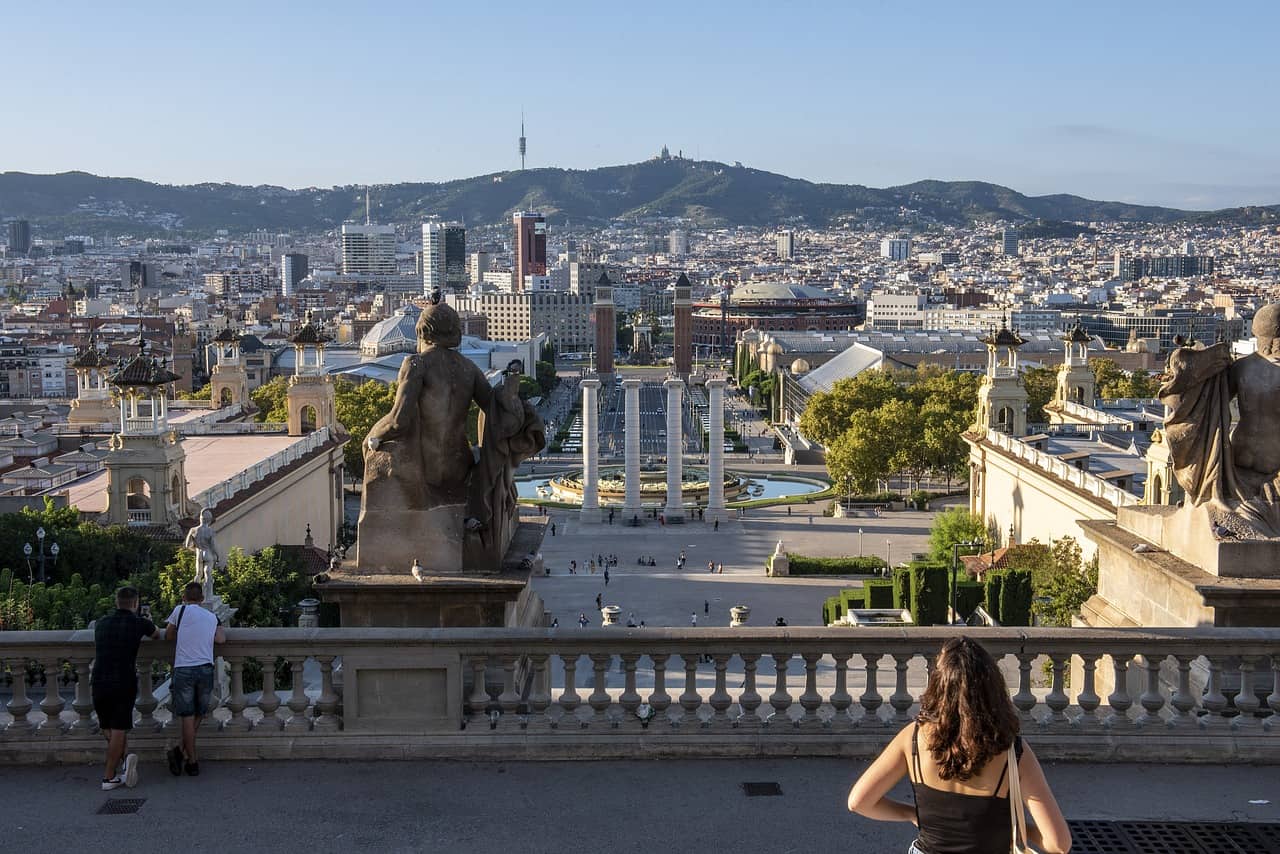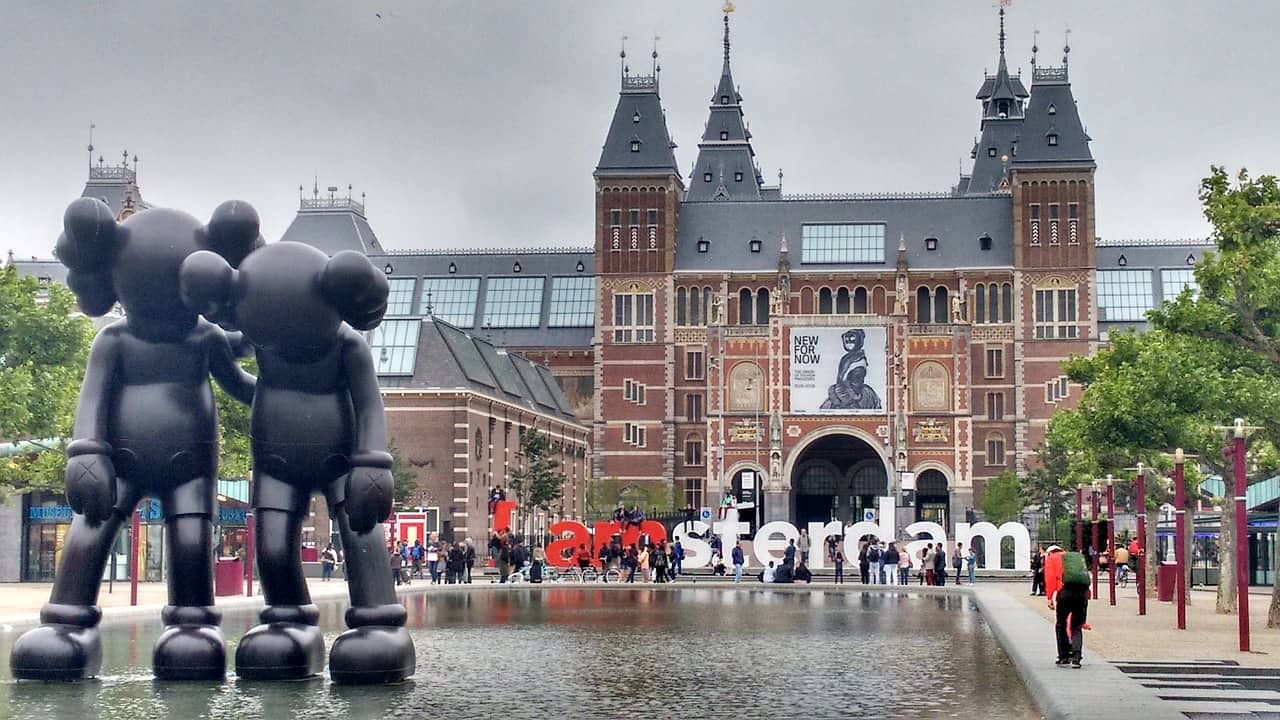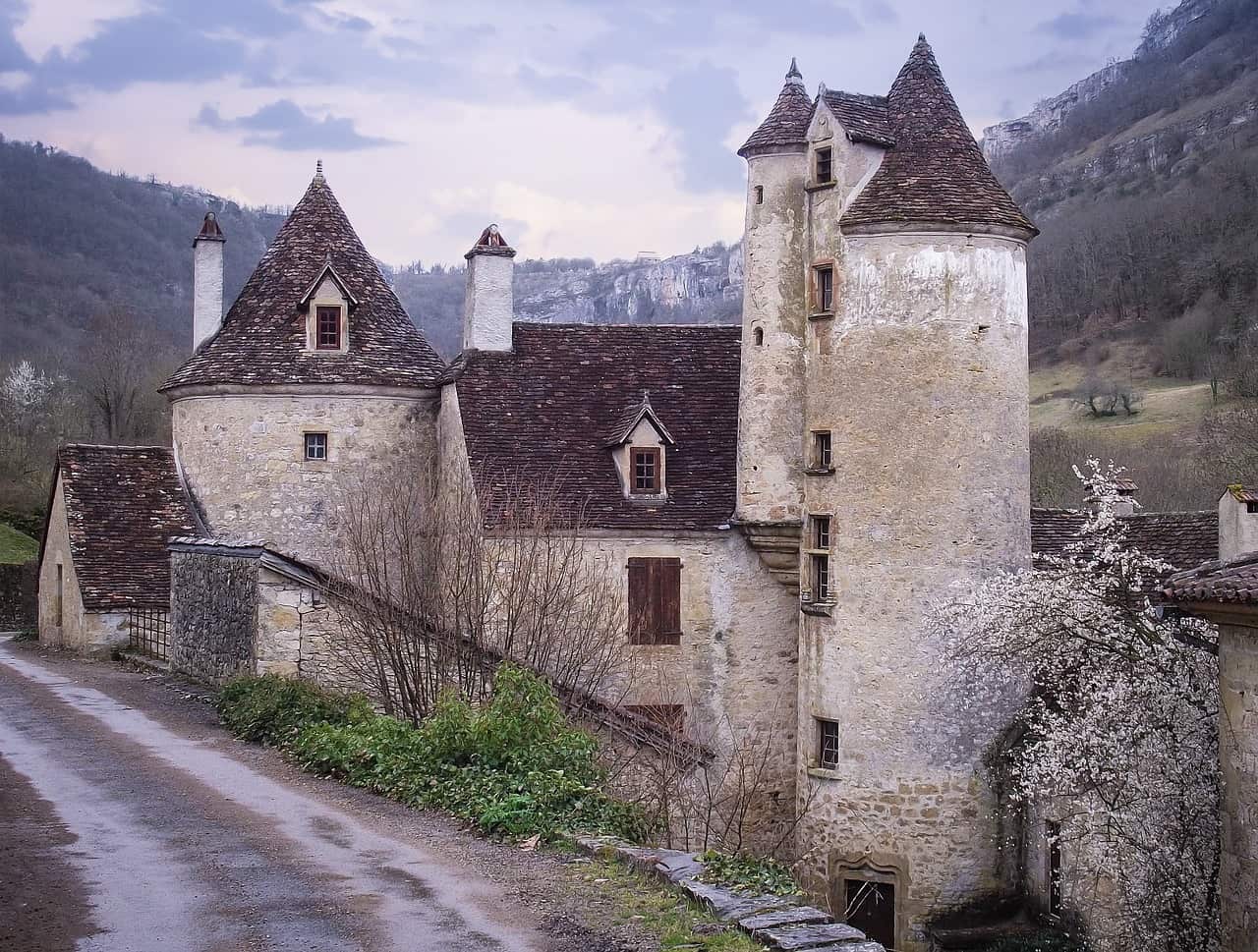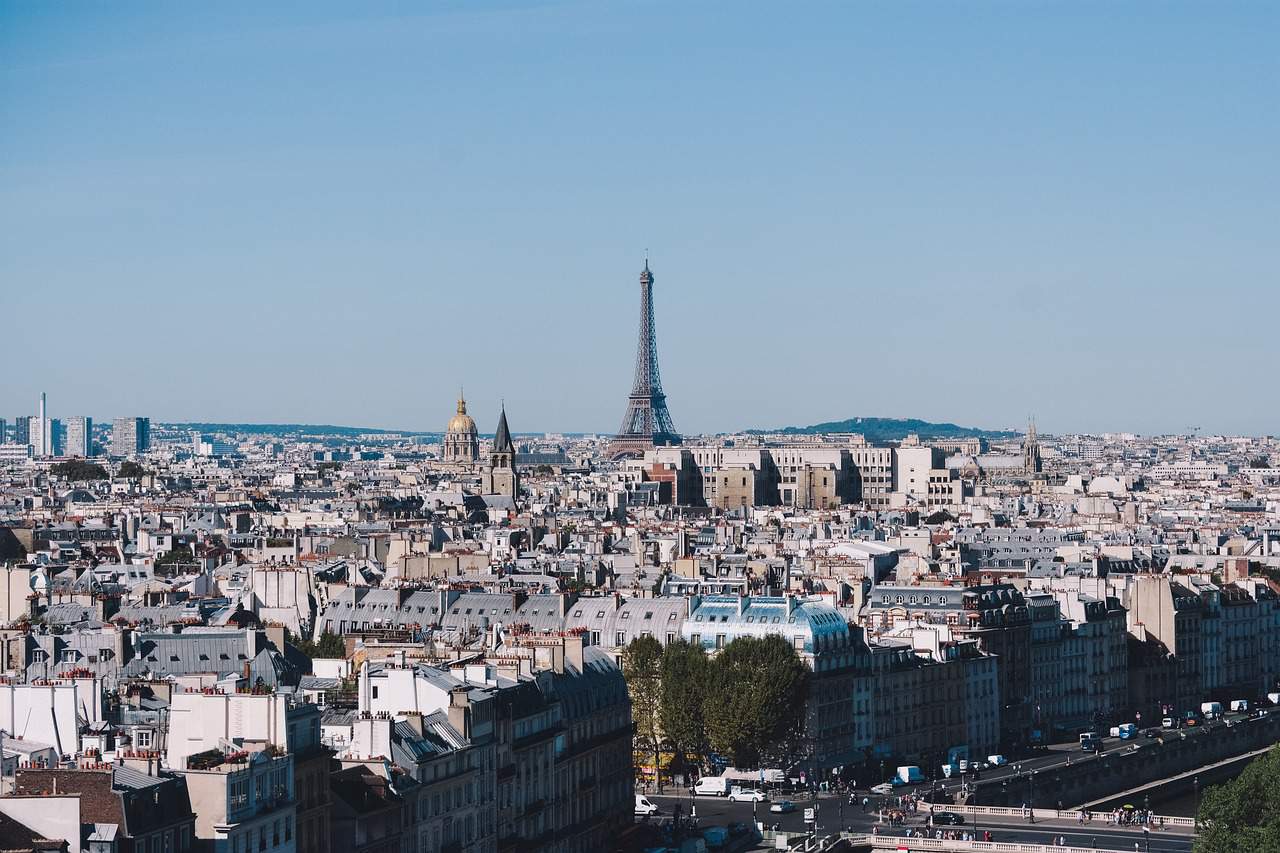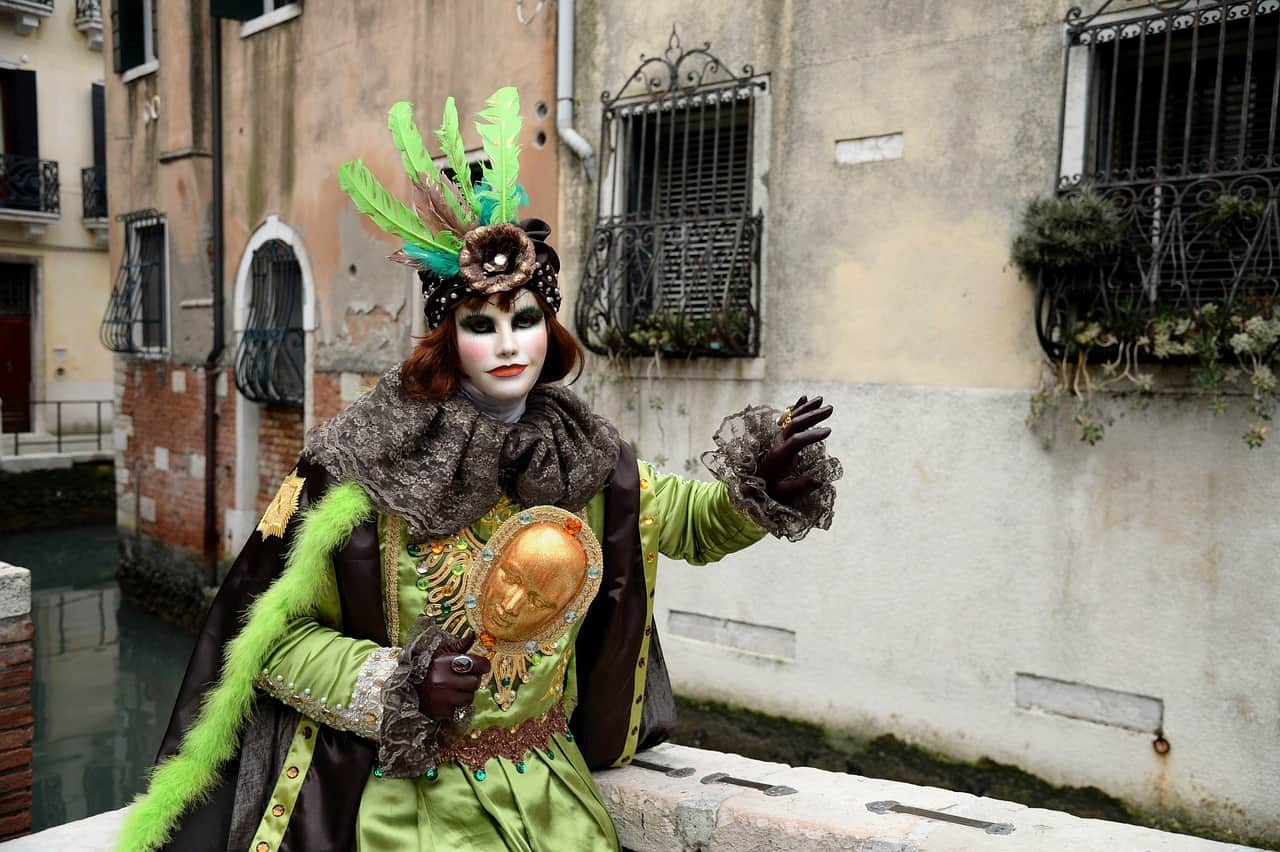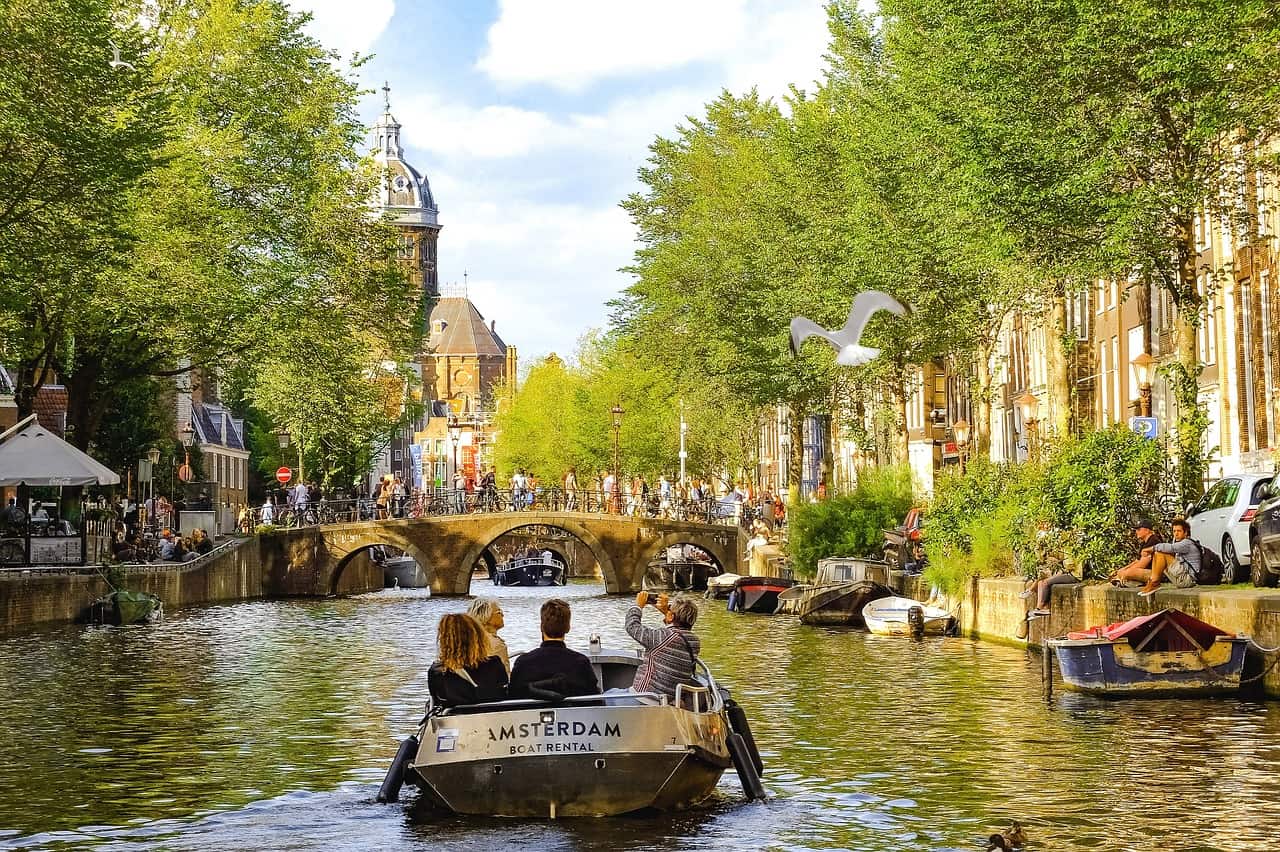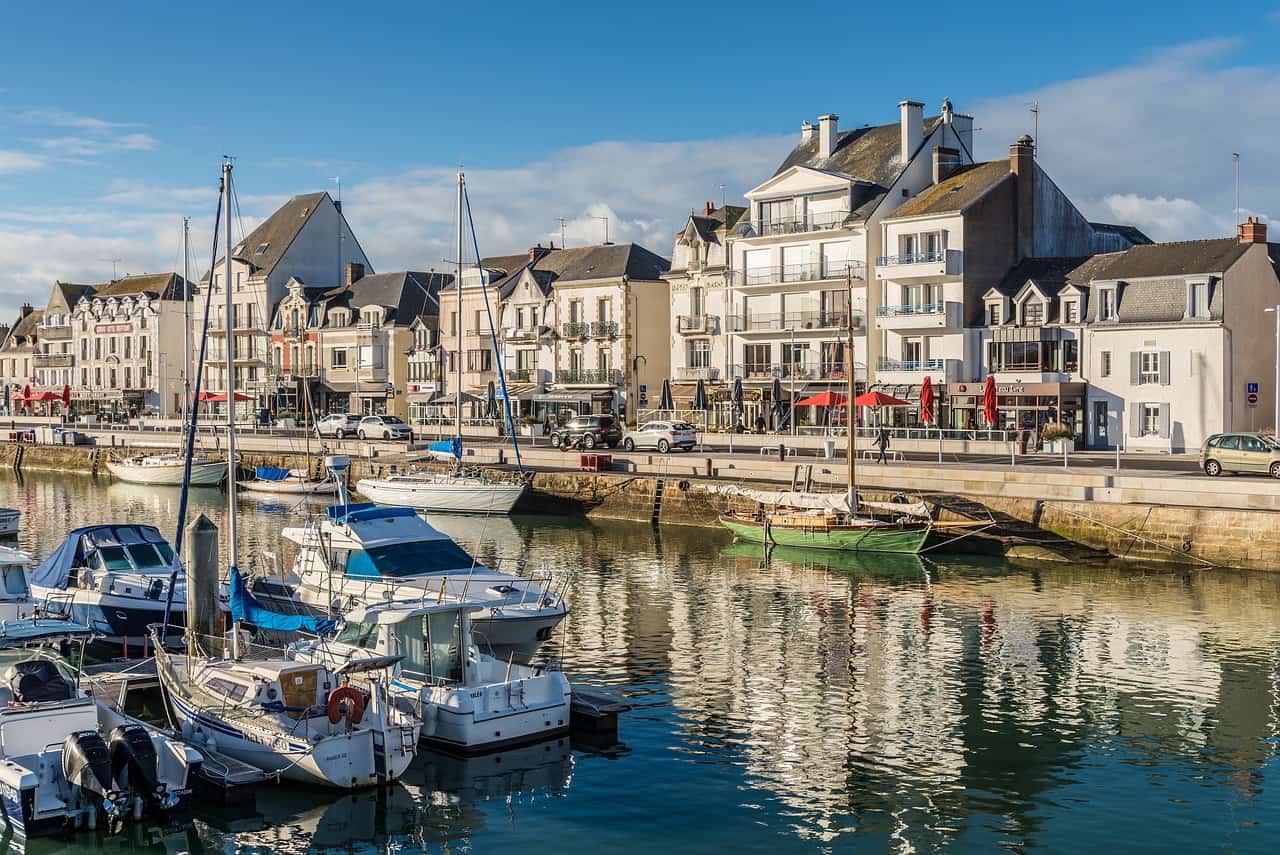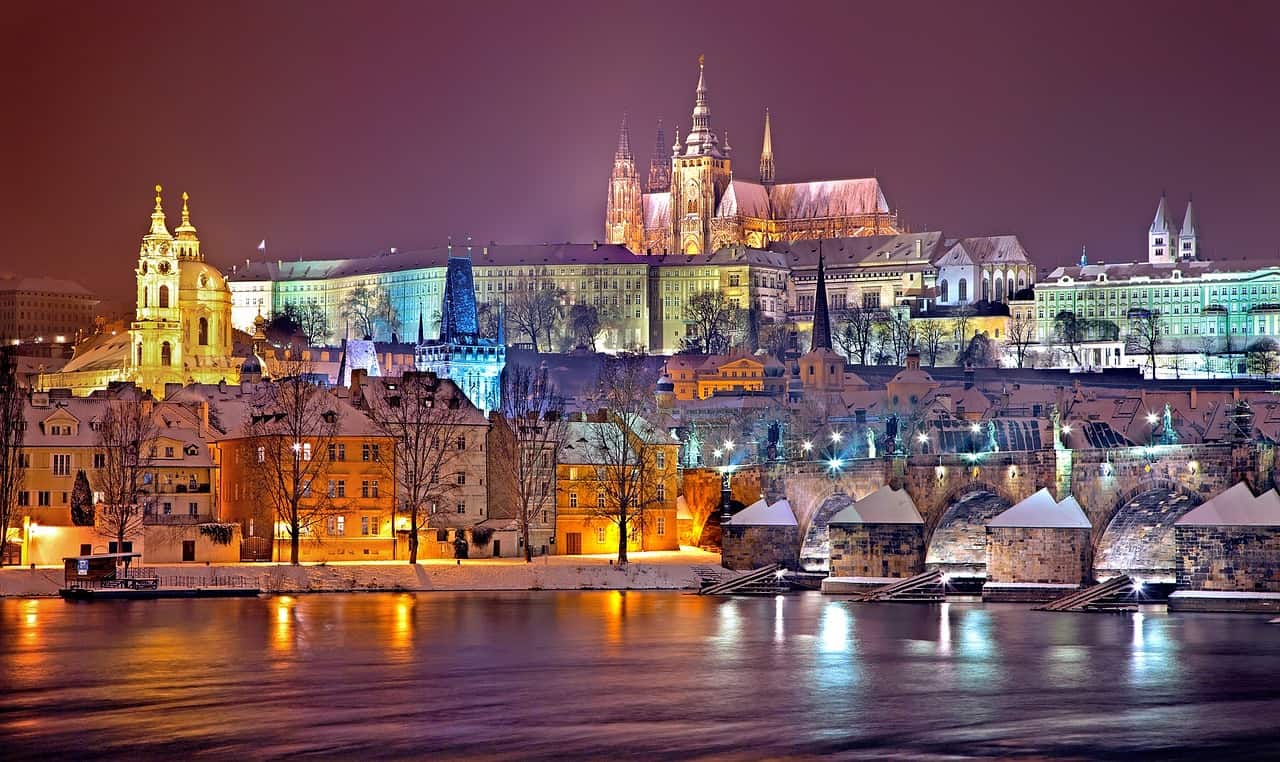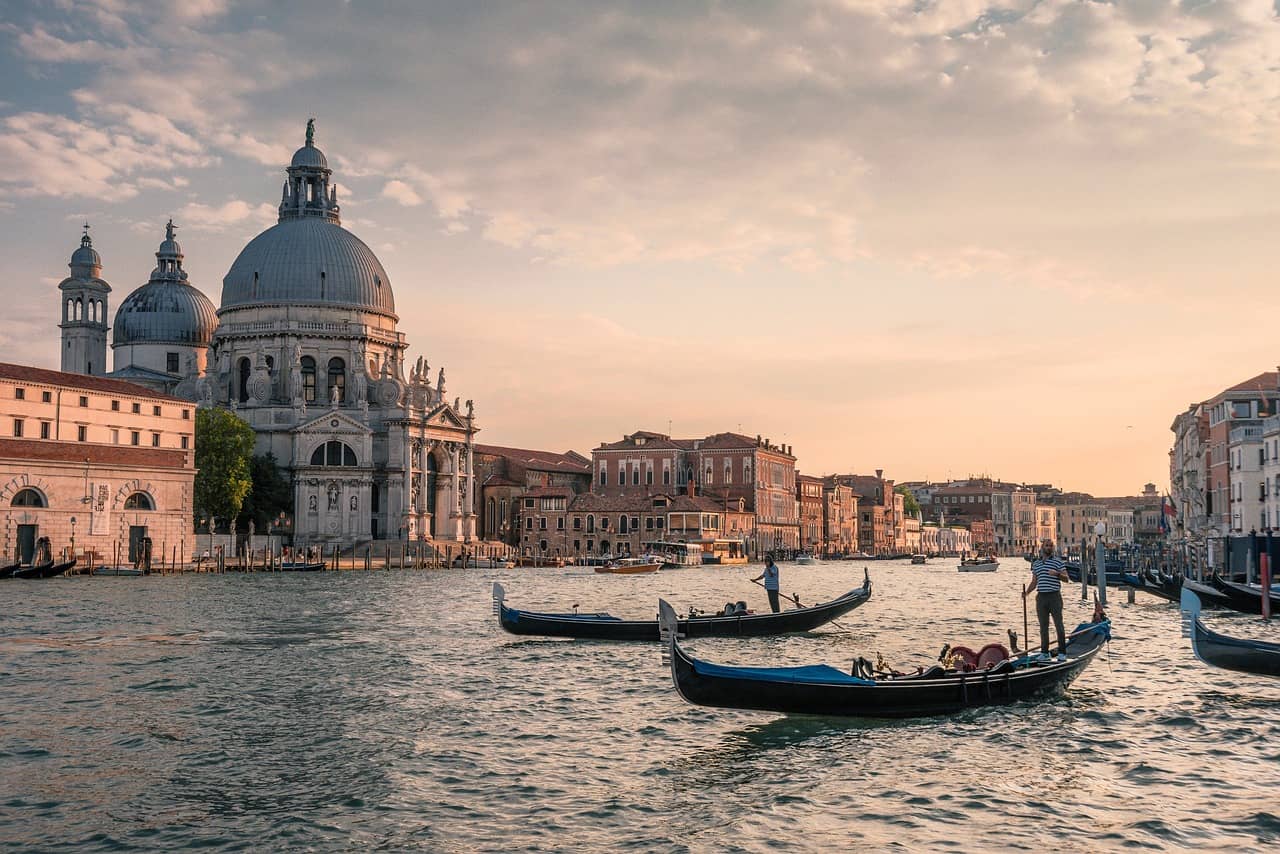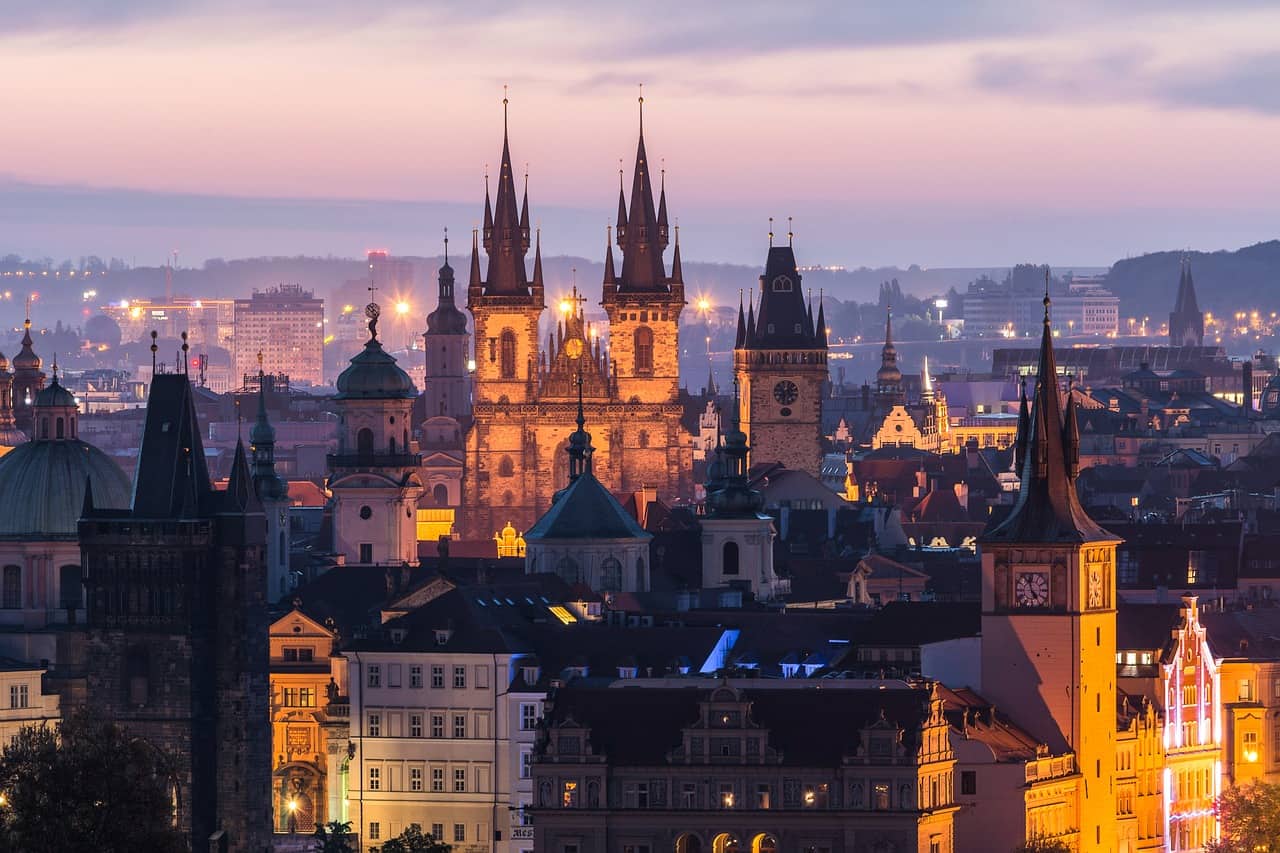In the tapestry of Europe’s rich heritage, the designation of European Cultural Capitals stands as a beacon, illuminating the continent’s diverse cultural tapestry. These cities, carefully chosen to carry the torch of cultural significance, weave narratives that transcend time and geography. As someone who has wandered through the cobbled streets of these designated gems, I’ve come to understand that being a European Cultural Capital is not merely an honorary title; it’s an entrustment to become the custodian of history, an ambassador of art, and a curator of the cultural kaleidoscope that defines Europe.
I. Essence of European Cultural Capitals
Where Heritage Meets Modernity: European Cultural Capitals are cities bestowed with a unique honor—a recognition of their commitment to fostering cultural exchange, creativity, and innovation. These cities become living canvases, where the past intertwines with the present, and the echoes of history harmonize with the avant-garde notes of contemporary expression. From the iconic architectural wonders of Paris to the avant-garde art scenes in Berlin, each city bears the responsibility of showcasing Europe’s cultural essence.
Roots in Renaissance: The roots of the European Cultural Capitals can be traced back to the Renaissance—a period when Europe experienced a rebirth of artistic, intellectual, and cultural exploration. The concept gained formal recognition in 1985, with Athens being the inaugural city. Since then, cities across the continent have embraced this prestigious role, becoming stages for cultural festivals, artistic collaborations, and a celebration of diversity. Walking through the historic streets of Florence, where the Renaissance unfolded, or the modern boulevards of Lisbon, one can sense the continuum of cultural significance that these cities embody.
A Cultural Kaleidoscope: The purpose of designating European Cultural Capitals extends far beyond a ceremonial acknowledgment. It’s a deliberate effort to spotlight the cultural wealth of cities that serve as crucibles of creativity. These designated cities are tasked with creating programs and events that foster cultural dialogue, ignite artistic inspiration, and transcend national borders. Having witnessed the vibrant festivals and collaborative projects in Riga, I realized that the purpose is not just to showcase the city itself but to act as a cultural catalyst, inspiring both locals and visitors alike.
As we delve into the essence of European Cultural Capitals, let it be an invitation to embark on a cultural odyssey. These cities, with their intricately woven histories and contemporary vibrancy, are not just destinations but living testaments to the enduring spirit of European culture. Join me as we unravel the chapters of this cultural saga, exploring the designated cities that carry the torch of Europe’s artistic and intellectual legacy.
II. Selection Process: The Artistry Behind Choosing European Cultural Capitals
The process of selecting European Cultural Capitals is a meticulous dance, where cities become canvases and cultural vibrancy takes center stage. As I’ve delved into the intricacies of this selection process, I’ve come to appreciate that it’s not merely about choosing cities; it’s about recognizing those that embody the spirit of cultural innovation, diversity, and artistic expression.
A. Criteria for Choosing European Cultural Capitals
Harmony of Heritage and Modernity: The criteria for choosing European Cultural Capitals reflect a delicate interplay between preserving heritage and embracing modernity. Cities are evaluated based on their commitment to cultural development, plans for engaging citizens in cultural activities, and initiatives that promote cross-border collaboration. The selection panel seeks cities that showcase a harmonious blend of historic significance, contemporary art scenes, and a commitment to fostering cultural diversity. The criteria serve as a compass, guiding the selection committee through the vast cultural landscapes of Europe.
B. Impact on Local Communities and Tourism
Cultural Renaissance at Home: The designation of European Cultural Capitals doesn’t merely bestow prestige; it catalyzes a cultural renaissance within local communities. The impact is profound, fostering a sense of pride and identity among citizens. Local artists find platforms for expression, cultural venues flourish, and citizens become active participants in the cultural narrative of their city. Beyond the local sphere, the designation acts as a cultural beacon, drawing tourists eager to immerse themselves in a city’s artistic tapestry. Having witnessed the transformative effects in Marseille, where the cultural reawakening was palpable, I’ve seen how this designation can breathe new life into communities.
C. Examples of Past European Cultural Capitals
Chronicles of Cultural Brilliance: The roll call of past European Cultural Capitals reads like a chronicle of cultural brilliance. From Athens, the inaugural city in 1985, to Matera, the Italian gem that graced the stage in 2019, each city has left an indelible mark on the cultural landscape of Europe. Cities like Glasgow (1990) and Porto (2001) have showcased the impact of the designation, with lasting legacies that continue to shape their cultural scenes. My own experiences exploring past Cultural Capitals, such as Plovdiv in 2019, have been journeys into the heart of cultural dynamism, where the city itself becomes a living testament to the power of artistic expression.
As we delve into the intricacies of the selection process, let it be a reminder that behind each chosen city is a story waiting to unfold—a cultural epic that transcends borders and captivates the hearts of those eager to explore the artistic soul of Europe. Join me as we traverse the paths of past and future Cultural Capitals, where the artistry of selection transforms cities into living works of cultural brilliance.
III. Cultural Heritage: Unveiling Europe’s Timeless Treasures
In the embrace of European Cultural Capitals, cultural heritage becomes not just a part of the city’s identity but the very fabric that weaves through its streets and landmarks. Having wandered through these cities, I’ve stood beneath towering architectural marvels, wandered through hallowed museums, and traced the footsteps of history in the shadows of historical landmarks.
A. Architectural Treasures
Skies Adorned with Stories: Architectural treasures in European Cultural Capitals are not just structures; they are narratives etched in stone and mortar. From the iconic spires of Prague to the avant-garde designs of Bilbao’s Guggenheim Museum, each city showcases a symphony of architectural styles that spans centuries. My own awe-inspiring moments beneath the intricate arches of Barcelona’s Sagrada Familia or amid the grandeur of Vienna’s Schönbrunn Palace have been testament to the enduring beauty that European cities offer—a visual feast that transcends time.
B. Museums and Galleries
Havens of Artistic Expression: Museums and galleries in these cultural capitals are veritable treasure troves, where art becomes a dialogue between the past and the present. From the Louvre’s enigmatic Mona Lisa in Paris to the contemporary exhibitions at London’s Tate Modern, each city serves as a canvas for artistic expression. Walking through the halls of the Rijksmuseum in Amsterdam or experiencing the immersive exhibits at Berlin’s Museum Island, I’ve felt the pulse of creativity beating through the cultural veins of these cities.
C. Historical Landmarks
Echoes of Eras Past: Historical landmarks are the living chapters of a city’s story, where the echoes of eras past resonate through cobblestone streets and towering monuments. Whether standing before the majesty of Rome’s Colosseum or marveling at the medieval charm of Tallinn’s Old Town, every European Cultural Capital boasts landmarks that transcend time. My own explorations, from the regal palaces of Dresden to the ancient ruins of Athens, have been journeys into the heart of history, where the city itself becomes a narrative unfolding.
D. Preservation Efforts and Challenges
Guardians of Time: Preserving Europe’s cultural heritage is an ongoing saga, where cities become guardians of time. Efforts to safeguard architectural treasures, maintain museums, and protect historical landmarks are not without challenges. Balancing the demands of modernization with the imperative to conserve poses intricate dilemmas. My experiences delving into the preservation efforts in cities like Krakow, where the medieval charm is meticulously maintained, underscore the delicate dance between progress and conservation.
As we navigate the cultural heritage of European Cultural Capitals, let it be an invitation to embark on your own architectural odyssey—a journey through time where every building, artwork, and cobblestone tells a story. Join me in uncovering the timeless treasures that grace these cities, where the past is not a distant memory but a vibrant thread in the rich tapestry of cultural expression.
IV. Diversity of Arts and Entertainment: A Cultural Kaleidoscope Unfolding
Within the realm of European Cultural Capitals, the diversity of arts and entertainment unfolds as a mesmerizing tapestry, where every thread represents a unique expression of creativity. My own journey through these cities has been a front-row seat to performances that span genres and celebrations that transcend borders.
A. Performing Arts Festivals
Stages Alight with Passion: Performing arts festivals in European Cultural Capitals are not mere events; they are grand spectacles that transform cities into stages alight with passion. From the vibrant hues of Edinburgh’s Fringe Festival to the classical crescendos at Salzburg’s Summer Festival, each city becomes a canvas for artistic expression. Experiencing the open-air performances in Avignon or the avant-garde showcases at Reykjavik’s Arts Festival has been a reminder that these festivals are not just about entertainment; they are celebrations of the human spirit.
B. Cultural Events and Celebrations
Rhythms of Tradition and Modernity: Cultural events and celebrations become the heartbeat of these cities, where tradition and modernity dance in rhythm. From the flamboyant carnivals of Nice to the solemn processions during Seville’s Holy Week, each event is a testament to the cultural richness that permeates European life. The joyous revelry of Copenhagen’s Distortion Festival or the historic charm of Krakow’s St. John’s Fair showcases the ability of these capitals to seamlessly blend centuries-old traditions with contemporary celebrations.
C. Influence on Contemporary Arts and Trends
Fertile Grounds of Innovation: The influence of European Cultural Capitals on contemporary arts and trends is akin to fertile grounds nurturing innovation. Cities like Berlin, with its thriving street art scene, or the cutting-edge installations at Istanbul’s Contemporary Istanbul Art Fair, showcase how these capitals become trendsetters. My own exploration of the burgeoning art districts in Valencia or the experimental theaters in Prague has revealed that these cities not only preserve cultural traditions but also act as incubators for the avant-garde.
As we immerse ourselves in the diversity of arts and entertainment within European Cultural Capitals, let it be an invitation to witness the kaleidoscope of human expression. From the grand stages of performing arts festivals to the pulsating energy of cultural celebrations, these cities offer not just entertainment but an opportunity to glimpse into the soul of a society. Join me in savoring the artistic feasts and reveling in the cultural celebrations that make these capitals not just destinations but living canvases of creativity.
V. Socio-Economic Impact: The Ripple Effect of Cultural Capitals
In the realm of European Cultural Capitals, the impact isn’t confined to the stages and galleries but resonates through the very pulse of society, leaving an indelible mark on the socio-economic landscape. My own ventures into these capitals have revealed that the designation doesn’t just bestow cultural prestige; it catalyzes a transformative ripple effect that touches every aspect of community life.
A. Tourism Boost
From Visitors to Cultural Pilgrims: The socio-economic impact of European Cultural Capitals begins with a surge in tourism, where cities metamorphose from destinations to cultural pilgrimages. The allure of being immersed in a city’s artistic and historical narrative draws not just tourists but cultural enthusiasts seeking to partake in the living legacy of the city. From the bustling streets of Valletta during its stint as a Cultural Capital to the influx of visitors exploring the cultural corridors of Rijeka, the tourism boost is a testament to the magnetic pull of cultural vibrancy.
B. Economic Revitalization
Economic Canvases Awaken: The designation of a city as a European Cultural Capital is a harbinger of economic revitalization. Cultural events, festivals, and artistic endeavors breathe life into local economies. The influx of visitors fuels the hospitality and service sectors, while the burgeoning arts scene stimulates creative industries. The economic heartbeat quickens as cafes bustle, artisans flourish, and businesses thrive. My own experiences in Matera, where the economic resurgence was palpable, underscore how the arts become not just cultural expressions but economic catalysts.
C. Community Engagement and Development
Cultural Bonds Beyond Borders: European Cultural Capitals cease to be passive recipients of accolades; they become active participants in community engagement and development. The designation fosters a sense of civic pride and ownership among locals, inspiring community-led initiatives and collaborations. From grassroots art projects in Plovdiv to the interactive cultural spaces in Leeuwarden, the impact is evident in the blossoming of community-driven developments. These capitals become not just cultural hubs but communal canvases where the collective identity is painted and celebrated.
As we delve into the socio-economic impact of European Cultural Capitals, let it be a recognition that the effects transcend mere economic metrics. These cities become living testaments to the idea that cultural vitality isn’t just an embellishment; it’s a driving force that shapes economies, fosters community bonds, and transforms every visitor into a participant in the cultural narrative. Join me in exploring the profound impact these capitals have on the socio-economic fabric, where the arts become not just an embellishment but a catalyst for holistic societal development.
VI. Challenges and Criticisms: Navigating the Shadows of Cultural Capitals
In the spotlight of European Cultural Capitals, where creativity and celebration take center stage, there also lurk challenges and criticisms that cast shadows on the grand cultural canvas. My own journeys through these cities have unveiled the complexities that arise when tradition and modernity collide, and the echoes of celebration reverberate against the backdrop of genuine concerns.
A. Pressure on Local Infrastructure
Strains Beneath the Surface: The designation of a city as a European Cultural Capital brings forth a surge in visitors and activities, but with it comes the strain on local infrastructure. Roads that once echoed with the footsteps of locals suddenly bear the weight of increased tourism. Cultural venues, although vibrant, grapple with the challenge of accommodating growing audiences. My experiences in cities like Athens and Porto have illuminated the delicate balance required to maintain the charm of local infrastructure amid the influx of cultural enthusiasts.
B. Gentrification Concerns
Whispers of Gentrification: As the cultural scene flourishes, concerns of gentrification often whisper through the cobbled streets of these capitals. The revitalization of neighborhoods can inadvertently lead to the displacement of local residents and businesses. The charm of historical districts may be overshadowed by rising property values and changing demographics. My exploration of cities like Istanbul and Tallinn has prompted reflections on the need to nurture cultural vitality while safeguarding the soul of neighborhoods from the specter of gentrification.
C. Balancing Tradition and Modernity
Tightrope Between Time: European Cultural Capitals grapple with the challenge of balancing tradition and modernity—a tightrope walk where the weight of cultural heritage is counterbalanced by the desire for contemporary expression. The dichotomy is evident in debates over architectural styles, event programming, and the preservation of cultural traditions. My time in cities like Riga and Marseille has underscored the delicate dance required to honor a city’s roots while embracing the winds of change.
As we delve into the challenges and criticisms surrounding European Cultural Capitals, let it be a reminder that the journey to cultural brilliance is not without its shadows. These cities, pulsating with creativity, also navigate the complexities of maintaining equilibrium amid the pressures of success. Join me in acknowledging the shadows that shape the narratives of these capitals, where the challenges become threads in the rich tapestry of their cultural evolution.
VII. Success Stories: Echoes of Triumph in Cultural Capitals
In the wake of the grand celebrations and artistic crescendos of European Cultural Capitals, success stories emerge as enduring echoes of triumph. My journey through these cities has been a witness to the transformative power of cultural designations, where the positive outcomes, lasting legacies, and cultural exchanges create a legacy that extends far beyond the designated year.
A. Positive Outcomes for Past Cultural Capitals
Cities Transformed, Souls Enlightened: The impact of the European Cultural Capitals resonates long after the banners are taken down and the stages disassembled. Past capitals such as Liverpool and Florence have seen urban regeneration, where neglected areas were revitalized, transforming them into cultural hubs that continue to thrive. The positive outcomes extend beyond infrastructure; they delve into the very soul of the city, enlightening both residents and visitors with a newfound appreciation for cultural richness.
B. Lasting Legacies and Cultural Exchange
Cultural Gifts Transcending Time: The legacies forged in Cultural Capitals are gifts that transcend time, weaving themselves into the cultural fabric of the city. Museums established during their tenure, like the Museum of European and Mediterranean Civilisations in Marseille, stand as monuments to cultural exchange. These legacies become beacons that attract artists, scholars, and cultural enthusiasts, fostering a perpetual exchange of ideas and inspiration. My own experiences in Wroclaw and Paphos have illuminated how these lasting legacies act as bridges connecting diverse cultures.
C. Lessons Learned for Future Designations
Wisdom Carved from Experience: As the baton of cultural designation passes from one city to another, the lessons learned from past designations become guiding lights. Cities like Porto and Glasgow have showcased that meticulous planning, community engagement, and sustainable practices are the cornerstones of success. The resonance of cultural celebration is enhanced when the city embraces its designation not as a one-year affair but as a commitment to a lasting cultural legacy. Exploring these cities, I’ve come to appreciate that each success story is a chapter in an evolving narrative, contributing to the collective wisdom for future designations.
As we navigate the success stories of European Cultural Capitals, let it be an ode to the enduring impact that cultural celebrations can have on the very essence of a city. Join me in savoring the triumphs that echo through the cobbled streets and museum halls, where the legacy of cultural brilliance becomes a testament to the transformative power of art, creativity, and shared human experiences.
VIII. Future Trends and Prospects: Navigating the Cultural Horizons Ahead
As the sun sets on the success stories of European Cultural Capitals, the horizon beckons towards future trends and prospects, where the cultural landscape continues to evolve. My own explorations through these cities have provided glimpses into the changing currents that may shape tomorrow’s capitals, signaling not just a celebration of heritage but an anticipation of what lies ahead.
A. Evolving Criteria for Selecting Cultural Capitals
Beyond Tradition, Into Innovation: The criteria for selecting European Cultural Capitals are on the brink of evolution, transcending the traditional parameters. While historical significance and cultural richness remain paramount, there’s a growing emphasis on innovation, sustainability, and inclusivity. Cities vying for the designation are not just showcasing their heritage but articulating a vision for the future. My experiences in cities like Galway and Rijeka have illustrated how the evolving criteria are becoming a compass guiding cities towards a cultural horizon that balances tradition with a forward-looking perspective.
B. Emerging Cities and Regions
Rising Stars on the Cultural Map: As the program matures, emerging cities and regions are stepping into the spotlight, eager to carve their place on the cultural map. The rise of cities like Aarhus and Matera has shown that cultural brilliance is not confined to metropolises; it can blossom in unexpected corners. These emerging capitals bring diverse narratives, regional flavors, and unique cultural expressions, enriching the program with a tapestry of stories. Exploring these underdogs has been a revelation, proving that cultural capital can thrive beyond the predictable.
C. Potential Changes in the Program’s Focus
From Celebrations to Collaborations: The focus of the program is gradually shifting from isolated celebrations to collaborative initiatives that foster cultural exchanges on a broader scale. The potential integration of digital platforms, interactive experiences, and global collaborations hints at a future where European Cultural Capitals become not just local events but international celebrations. Cities like Valletta and Plovdiv have already shown how leveraging technology and collaboration can amplify the impact of cultural designations, transcending geographical boundaries.
Join me in peering into the crystal ball of European Cultural Capitals, where the trends and prospects unfold like chapters in an ever-evolving cultural saga. As we anticipate the future, let’s celebrate the cities and regions that are poised to become the next custodians of cultural brilliance, shaping a narrative that transcends time and borders.
IX. Conclusion: A Tapestry Unfurls, Inviting Continued Celebration
As we draw the curtain on the exploration of European Cultural Capitals, it’s akin to concluding a mesmerizing chapter in the book of cultural tapestries. The significance of these designations is not confined to the grandeur of festivities but extends into the very essence of European identity. My own odyssey through these cities has been a kaleidoscope of experiences, revealing the profound impact of cultural celebration on the past, present, and future.
A Symphony of Heritage and Innovation: European Cultural Capitals serve as custodians of heritage, guardians of innovation, and conduits of shared human experiences. The importance lies not just in the celebration of historical richness but in the cultivation of a cultural legacy that transcends generations. From Athens to Wroclaw, each designation echoes the sentiment that culture is a living, breathing entity—an ever-evolving symphony that harmonizes tradition with the rhythms of contemporary expression.
Shadows Behind Brilliance, Lessons Within Challenges: While celebrating the successes, it’s vital to acknowledge the shadows that dance behind the brilliance of Cultural Capitals. The challenges, from infrastructural strains to gentrification concerns, are not detractions but lessons etched into the narrative. As we look back at cities like Paphos and Valletta, the challenges encountered become blueprints for future designations, offering a roadmap to navigate the intricate balance between cultural vibrancy and the preservation of local identities.
A Continuum of Cultural Exploration: The exploration of European Cultural Capitals is not a finite journey but a continuum—a perpetually unfolding saga that invites all to become cultural pilgrims. As we bid adieu to one chapter, the anticipation for the next overture is palpable. The beauty lies in the diversity of stories yet untold, in cities yet undiscovered, and in cultural nuances waiting to be celebrated. Join me in the pledge to continue this exploration, to revel in the richness of European culture, and to be active participants in the symphony of shared heritage.
In conclusion, let the echoes of past celebrations reverberate as a reminder that the cultural tapestry of Europe is not static but a vibrant, ever-evolving masterpiece. The journey continues, and the celebration of European culture is an open invitation for all to immerse themselves in the richness of history, the brilliance of innovation, and the beauty of shared human experiences.
